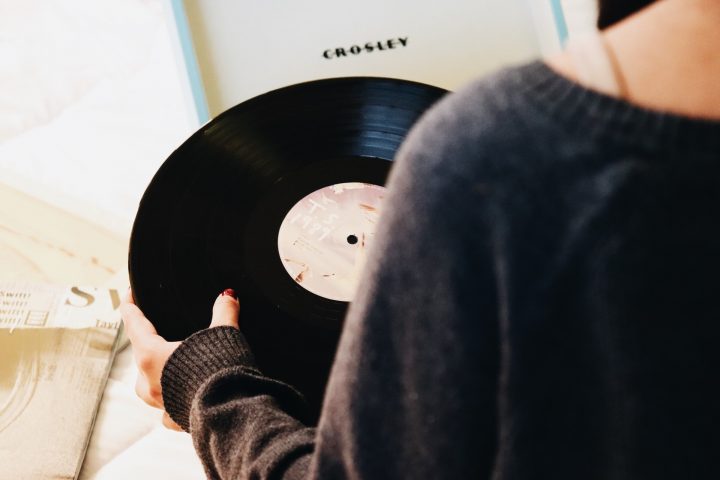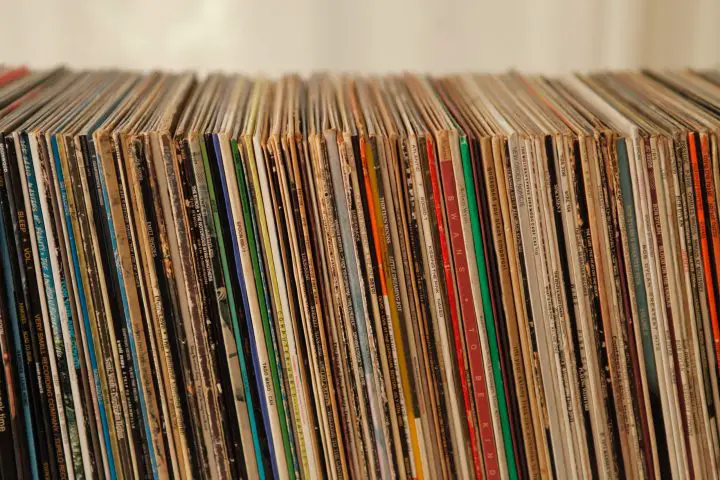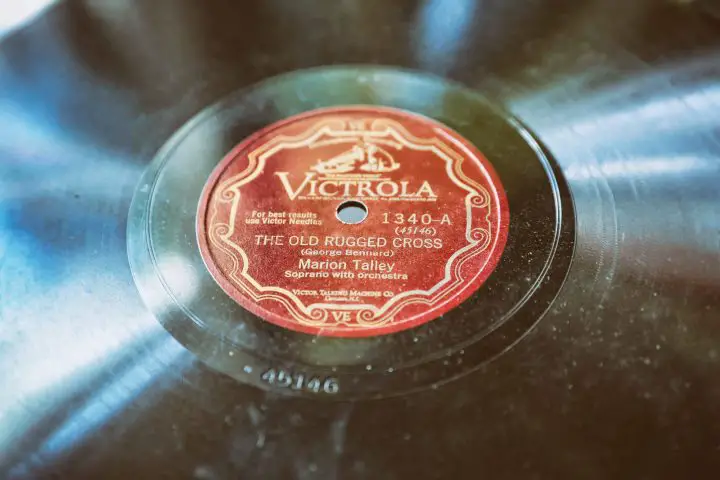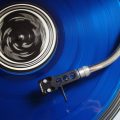In the resurgence of vinyl records, enthusiasts face the not-so-rare phenomenon of warped records. This issue, transcending mere storage mishaps, stems from the overwhelming demand on pressing plants, leading to compromised quality. Even as turntables navigate these imperfections, the risk to their delicate components is palpable. What should we do to fix or prevent record warping?
Table of Contents
- How Do Records Warp?
- Preventative Measures
- How to Fix a Warped Record
- Impact of Warping on Sound Quality
- Storage Solutions to Prevent Warping
- Handling and Usage Tips
- Final Tones
- FAQs How To Fix a Warped Record
Flick through your illustrious record collection and you will soon find a precious and prized volume that has come to more closely resemble a potato chip than a vinyl record. Cue the curse of the warped record!
Sadly, this is not just a problem with the environmental conditions that a record has been stored in. What with the veritable vinyl boom of the last decade or so, there has been increasing pressure on vinyl record pressing plants to keep up with the new expectations of a western society suddenly into buying and collecting records again.
As a result, the overall quality of records leaving these plants is far below average. I recently received a reissue copy of The Fall’s Hex Enduction Hour that indeed looked more like food than vinyl.
Depending on the severity of the warping, most turntables will be able to play the records still, equipped as they are with a stylus that seeks to follow the various small misalignments of the record. However, repeated use puts real strain on the stylus and can wear out the components of the turntable over time, so proceed with caution.
If you haven’t already guessed, this is a pretty imperfect medium, hence why this resurgence has been so unprecedented. Join us as we try to make sense of it.
How Do Records Warp?
- Heat Sensitivity: Vinyl records are made from a type of plastic that is very sensitive to heat. This can cause the record to warp and change its shape, affecting playback quality.
- Impact of Direct Sunlight: Exposure to direct sunlight can damage both the vinyl record and its sleeve. Sunlight can melt or distort the grooves of the disc and cause the sleeve to become weathered and bleached.
- Imroper Storage: To avoid warping and damage, vinyl records should be stored properly. This includes keeping them away from heat sources, out of direct sunlight, and in their sleeves to protect them.
- Thin Structure Vulnerability: The thin nature of vinyl records makes them especially vulnerable to taking on new shapes if pressed or stored incorrectly.
- Humidity and Climate Effects: The climate of a room, including its humidity, can affect the structural integrity of a vinyl record. High humidity levels can contribute to warping.
- Plastic’s Physical Properties: Vinyl records are essentially made from crude oil shaped into a disc. The physical properties of this plastic make it highly susceptible to environmental factors.
- Not Caring for the Sleeve: Just like the record itself, the sleeve can suffer damage from improper storage. Exposure to light and heat can bleach and deteriorate the sleeve, reducing its protective qualities.
- Not Immediately Resleeving: After use, it’s crucial to replace the vinyl disc in its corresponding sleeve promptly to minimize exposure to harmful conditions.
There are several different reasons for a warped record, though many of these tend to circulate around improper storage.
Heat tends to be one of the main factors for a warped record, a vinyl disc so affected as to literally change its shape. This disc tends to be made from vinyl plastic, crude oil shaped like a frisbee. Anyone could tell you that such a material is sensitive to heat, and they would be right! You wouldn’t put a piece of plastic crockery our cutlery on a radiator would you?

The same logic ought to apply here, for this is plastic in the realest sense. Exposed to heat, the plastic becomes softer and thus starts to mould to whatever shape it is being pressed into.
Since they are so thin anyhow, it does not take much to force them into a new shape. Other aspects of the climate of a space can have an impact on a vinyl record disc’s structural integrity too, not least the humidity of a given room.
A vinyl record disc can be sensitive to direct sunlight, also, so it is best to always replace a disc in its corresponding sleeve as soon as possible. The light can play tricks on the grooves of the disc, melting them and moulding them to another shape, or else blunting them entirely and erasing the details carved within.
The same very much goes for the sleeve itself, in fact, as a sleeve’s exposure to direct sunlight or other light sources is one of the main reasons for them being weathered and bleached, such as those you might see at a yard sale or in a second-hand store. Needless to say, then, at every stage proper storage is vital.
This is an imperfect medium, there is no two ways about it. The vinyl record is an incredibly sensitive thing, prey to many debilitating minutiae.
Preventative Measures
The only thing more helpful than methods helping to fix a warped record would be methods for you to prevent the warping of your records altogether. As previously mentioned, the vinyl record is a sensitive and fragile thing, scarcely able to maintain its structural integrity throughout its lifetime, and certainly not without being kept in the right conditions.
The first step would be to keep the records away from direct sunlight, much like a succulent. The heat, no matter how negligible it might feel to us humans, can have a significant impact on the structural integrity of a vinyl disc.
The sunlight can cause various damages to the sleeve and the record itself, and the slow exposure to heat can eventually warp a record beyond recognition. Keep the records away from windows and heating. You’ll also want to make sure you don’t leave your records in the car on a hot day, so much like a greenhouse is a hot car.
Another seemingly obvious method of preventing a warped record which can be easy to overlook is to avoid stacking them. A record on its own might not feel heavy, but its weight certainly adds up (just try lifting a big pile or box of records and you will know exactly what we mean). Not only can this contribute to an excess of pressure on the records, but can also exacerbate the presence of any dust or dirt in the sleeves. Pressure is exerted on these grains of dirt, forcing scratches into the surfaces of these records.

Less common, though by no means less important to consider, is the humidity of the space in which your records are kept. The humidity of a basement or attic room is likely to cause some serious damage to your record collection if left unchecked. Try to find a space you can use that isn’t overly humid, though if a basement is your only choice, you should consider installing a dehumidifier to provide a safe place to store your records.
How to Fix a Warped Record
Whether or not a warped record can be fixed or flattened ought very much to be assessed on a case by case basis. This should thus be obvious to the owner of the record in question. The more radically warped record will of course be unplayable, though it might still be worth trying. By the same turn, those that are not so radically warped and are in fact only the smallest fraction warped should be able to be salvaged from an early grave.
Method 1: Use of Two Heavy Objects
For this method, you will need two large and heavy objects. There ought to be large enough to cover the entire surface of the record and heavy enough to flatten the whole surface back into shape over time. Two oversized books would be great for this, though anything of the sort will do just fine, so long as the entire surface is covered on both sides.
Begin by cleaning the record of any residual dust or dirt before placing the warped record between these two objects, first placing one of the objects on a flat surface like a table, followed by the record, and then finishing off with the second object. For example, that might be books

If any parts of the record stick out from the bounds of these objects, then they might be warped in the process, so it is vital that both objects cover the whole surface of the warped record.
Be prepared to wait a while. Some sources believe that this process ought only take a few days, whereas some estimate the sum total of time will be measured in months. Certain sources, in fact, believe that you should leave the warped record to its sentence, checking its condition and playability every week.
This will be, by far, the longest method for fixing a warped record, for you are relying on archaic forces to do the job, in applying constant and gradual pressure to the warped record in question in order to undo this warping and return it to a neutral flattened disc shape.
Method 2: Use of Heat and Pressure
This method will require the use of specialized pieces of glass, so unless you have some lying around the house already it is recommended that you purchase this, especially with the following process in mind. So long as the two sheets of glass required are large enough to cover the surface of the record and are thick enough to withstand higher temperatures, you should be good to go.
This method very much uses the same logic as the first, though seeks to use heat to accelerate the process considerably. Place the warped record atop the first pane of glass and then place the second piece atop the warped record, sandwiching the record in question between the glass panes.
Next, you will want to preheat the oven to 175 °F or 79 °C and then place the glass and record sandwich inside. After 10 – 15 minutes, once the oven has reached the appropriate heat, place the record inside, carefully placing it onto the oven rack.

Since you are going to want to retrieve this later it would be an idea not to push it all the way in, for easier retrieval afterwards. Also, make sure that you are wearing protective gloves for the entire process and that the glass is already at room temperature, to prevent shattering.
Once the warped record has been inside for no longer than three minutes, remove it from the oven. Any longer than this and the record could melt. Keep a close eye on the record as it warms. If you notice any strange smells or noises, remove the record as soon as possible.
Place the record and glass panes on a flat surface, like the table aforementioned. Then place a heavy object on top of the glass pane, to apply a constant pressure which, combined with the influence of the heat, will help to repair the warping of the record.
Remove the record from its bounds once the glass has entirely cooled. Inspect the record carefully. If the record still shows significant warping, try repeating the above steps until it has been fixed. Otherwise, try placing it in a record player to see if you’ve been able to repair the damage.
Impact of Warping on Sound Quality
When a record is warped, it’s not just an eyesore – it can seriously impact the sound quality of your favorite tunes. As the turntable needle tries to navigate the peaks and valleys of a warped disc, it’s in for a bumpy ride that can lead to some less-than-stellar audio output.
Sound Distortion
One of the most noticeable effects of a warped record is sound distortion. As the needle struggles to maintain contact with the grooves, you might hear some wavering, wobbling, or downright weird noises that definitely weren’t part of the original recording. It’s like trying to drive a car on a road full of potholes – you’re bound to hit some bumps that’ll rattle your speakers.
Tracking Issues
Warping can also cause tracking issues, which means the needle might skip, jump, or repeat sections of the record. This is especially common on heavily warped discs, where the needle just can’t keep up with the extreme contours. It’s frustrating when you’re jamming out to your favorite song and suddenly you’re hearing the same guitar riff over and over again.
Turntable Needle Wear
Playing a warped record can also put extra stress on your turntable needle, leading to premature wear and tear. The constant up-and-down motion as it tries to trace the warped grooves can cause the needle to wear out faster than it would on a flat record. It’s like running a marathon in high heels – it’s not impossible, but it’s definitely not good for your feet (or your needle, in this case).
Audio Quality Reduction
Even if your warped record doesn’t exhibit obvious distortion or skipping, it can still have a negative impact on the overall audio quality. The sound might be slightly muffled, the stereo imaging might be off, or the dynamics might be compressed. It’s like looking at a picture through a foggy window – you can still see it, but it’s just not as clear and vibrant as it could be.
So, while a little warp here and there might not completely ruin your listening experience, it’s definitely not doing your records any favors. If you want to enjoy your vinyl collection to the fullest, it’s worth taking steps to prevent warping and fix any warped discs in your stash. Your ears (and your turntable) will thank you!
Storage Solutions to Prevent Warping
Now that we’ve covered the nitty-gritty of why records warp and how to fix ’em, let’s talk about prevention. After all, an ounce of prevention is worth a pound of cure, right? When it comes to keeping your vinyl collection in tip-top shape, proper storage is key.
Vertical Storage is Your Friend
First things first: always store your records vertically. Stacking them horizontally might seem like a space-saver, but it’s a surefire way to put uneven pressure on your records and cause warping over time. Imagine trying to sleep with a stack of books on your chest – not exactly comfortable, is it? Your records feel the same way.
Invest in some sturdy shelving units or record storage boxes that allow you to store your collection upright. This way, the only pressure on each record is its own weight, evenly distributed across its surface. Bonus points if your shelving has dividers to keep the records from leaning or falling over.
Give Your Records Some Breathing Room
When you’re arranging your records on the shelf, resist the urge to pack them in like sardines. Leave a little bit of space between each record to prevent them from rubbing against each other and potentially causing damage. It’s like giving your vinyl buddies some personal space – they’ll thank you for it.
If you’re using storage boxes, make sure they’re not overcrowded. You should be able to easily flip through your collection without having to force records in or out. Think of it like a game of vinyl Tetris, but with a little more breathing room.
Temperature Control is Crucial
As we mentioned earlier, heat is vinyl’s worst enemy. To keep your records from warping, it’s important to store them in a cool, dry place away from direct sunlight and heat sources. Ideally, you want to keep your vinyl in a room with a consistent temperature between 65-70°F (18-21°C).
If you’re really serious about preserving your collection, you might want to invest in a climate control system for your storage area. This can help maintain a stable temperature and humidity level, which is especially important if you live in a region with extreme weather fluctuations.
Don’t Forget About Humidity
Speaking of humidity, it’s another factor to keep in mind when storing your records. High humidity can lead to mold growth and other moisture-related damage, while low humidity can cause static buildup and make your records more brittle. Aim for a relative humidity level between 45-50%.
If you’re storing your records in a basement or other damp area, consider using a dehumidifier to keep moisture levels in check. On the flip side, if you’re in a dry climate, a humidifier can help prevent your records from becoming too dry and crackly.
Get Creative with Your Storage
Who says record storage has to be boring? There are tons of creative ways to display your collection while still keeping it safe from warping. Wall-mounted record shelves are a popular option for those who want to show off their vinyl while saving floor space. Just make sure the shelves are deep enough to support the full size of the record and angled slightly upward to prevent slipping.
If you’re feeling really crafty, you can even repurpose old furniture into unique record storage solutions. An old dresser or card catalog can be transformed into a one-of-a-kind record cabinet with a little bit of elbow grease and some DIY magic.
Handling and Usage Tips
Alright, so you’ve got your records stored like a pro and you’re ready to spin some tunes. But wait! Before you drop the needle, let’s talk about how to handle and play your vinyl safely. These delicate discs deserve some TLC, so let’s dive into the best practices for keeping your records in pristine condition.
Keep Your Hands Clean
First and foremost, always handle your records with clean hands. Oils and dirt from your fingers can easily transfer onto the surface of the vinyl, attracting dust and grime that can affect sound quality over time. If you’ve just polished off a bag of chips or finished working on your car, give your hands a good wash before reaching for your records.
Don’t Touch the Surface
When you do handle your records, avoid touching the surface of the vinyl at all costs. Instead, hold the record by the edges and the label area. This way, you minimize the risk of leaving fingerprints or scratches on the delicate grooves. Think of it like handling a fine piece of art – you wouldn’t go around poking the Mona Lisa, would you?
Use a Cleaning Kit
Even with the most careful handling, records can still accumulate dust and dirt over time. That’s where a good cleaning kit comes in handy. Invest in a quality record cleaning solution and a soft, anti-static brush or microfiber cloth. Before each play, give your record a gentle brush to remove any surface debris.
For deeper cleaning, you can use a specialized record cleaning machine or a manual cleaning method using a cleaning solution and a soft brush. Just be sure to follow the instructions carefully and avoid getting any liquid on the label or the inner sleeve.
- Clean and protect your vinyl collection — Our vinyl record cleaning kit is the simple and safe way to remove dirt, dust, grime and fingerprints from your records. Maximize your vinyl experience by restoring sound quality and enjoy pop, click and hiss-free listening.
Prices pulled from the Amazon Product Advertising API on:
Product prices and availability are accurate as of the date/time indicated and are subject to change. Any price and availability information displayed on [relevant Amazon Site(s), as applicable] at the time of purchase will apply to the purchase of this product.
Upgrade Your Playback Equipment
The quality of your playback equipment can make a big difference in how your records sound – and how long they last. If you’re using an old, worn-out turntable or a cheap, flimsy record player, you might be doing more harm than good to your vinyl collection.
Consider upgrading to a high-quality turntable with a well-balanced tonearm and a gentle, precise tracking system. Look for a player with adjustable tracking force and anti-skate settings, which can help minimize wear and tear on your records.
Replace Your Needle Regularly
The stylus, or needle, is the part of your turntable that actually touches the record and translates those tiny grooves into sweet, sweet music. But over time, the stylus can wear down and cause damage to your records if not replaced regularly.
As a general rule of thumb, you should replace your stylus every 800-1000 hours of play time. If you notice any signs of wear or damage, such as skipping or distortion, it’s time for a new needle. Don’t skimp on quality here – a good stylus can make all the difference in sound quality and record longevity.
Store Records Properly After Use
After you’ve finished jamming out to your favorite album, take a moment to properly store your record back in its sleeve. Gently wipe off any dust or debris with a soft brush, and make sure the record is completely dry before slipping it back into the inner sleeve.
Always store your records vertically, as we mentioned earlier, and avoid stacking them too tightly or leaving them out exposed to the elements. With proper storage and handling, your vinyl collection can last for generations to come.
- ITS NOT WOOD; ITS BETTER - Made with durable zBoard recycled paperboard
Prices pulled from the Amazon Product Advertising API on:
Product prices and availability are accurate as of the date/time indicated and are subject to change. Any price and availability information displayed on [relevant Amazon Site(s), as applicable] at the time of purchase will apply to the purchase of this product.
Final Tones
So, there you have it! Hopefully, this has been helpful in working through your own issues with the cursed and dreaded warped record. Proceed gently and with caution and assess your own situation intelligently so that you do not rush into a decision that could potentially destroy the warped record in question.
Certainly check your circumstances and the condition of the record before placing it in the oven in between two wads of glass, heating the whole lot up for several minutes.
FAQs How To Fix a Warped Record
Can a warped record be repaired?
This very much depends on the severity of the warping, to be judged on a case by case basis. If the warping is only relatively minor, i.e. if the record can still safely be spun on most turntables, then it is likely that the records warps can be repaired, either by longer methods of applying pressure or shorter ones involving heat. If, however, the record is more drastically warped, then it might be worth considering instead buying a new copy of the record, as it could be risky to attempt to fix such a warped record.
Why is my record warped?
There are several different reasons for a warped record, though many of these tend to circulate around improper storage. This is an imperfect medium, there is no two ways about it. The vinyl record is an incredibly sensitive thing, prey to many debilitating minutiae. Heat tends to be one of the main factors for a warped record, a vinyl disc so affected as to literally change its shape. This disc tends to be made from vinyl plastic, crude oil shaped like a frisbee. Anyone could tell you that such a material is sensitive to heat, and they would be right! You wouldn’t put a piece of plastic crockery our cutlery on a radiator would you?
Is it OK to play a slightly warped record?
More or less, yes. Most turntables are equipped to play slightly warped records. The stylus itself and the anti skate mechanisms are in place, in fact, to follow delicately the various minute grooves and particularities of vinyl record discs, so they are simply doing their job. If, however, this is done too frequently, it can have a negative effect on these inner mechanisms, including wearing out the very components of which the turntable is comprised.







